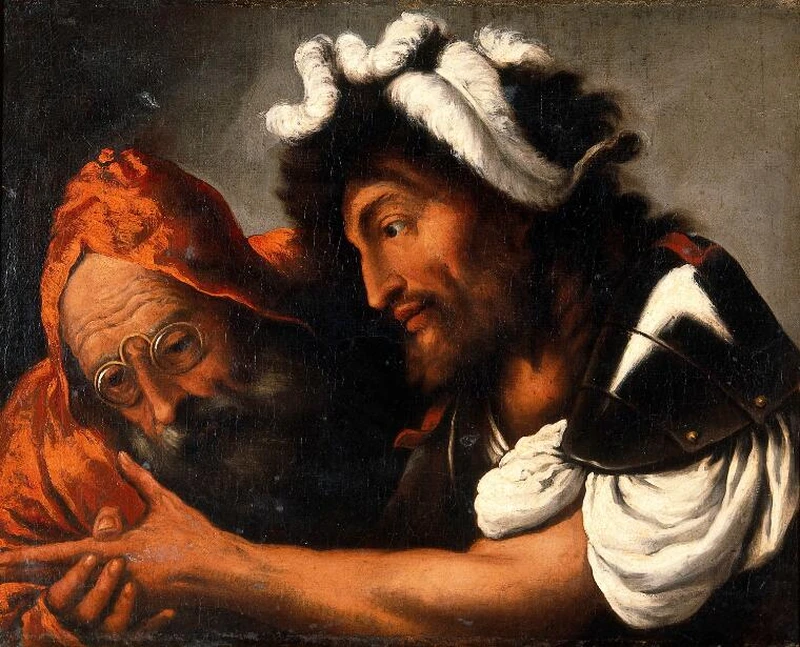In Plain Sight
20 Oct 2022-12 Feb 2023


Wellcome Collection presents ‘In Plain Sight’, a major exhibition exploring the different ways we see and are seen. Bringing together 140 objects and artworks, it will invite visitors to encounter different experiences of sighted, partially sighted and blind people to consider the subjectivities of vision and blindness and question the central place sight holds in human society.
In the UK, more than 2 million people live with sight loss and 69% of the population wear corrective eyewear or have had laser eye surgery, according to figures from the NHS. ‘In Plain Sight’ will feature eyewear from the 1600s to the present day, reflecting evolving design innovations and style, as well as contemporary artworks and commissions, and historical and scientific material investigating visual perception.
New commissions include works by Emilie Gossiaux, Nina Manandhar and Alexandra Zsigmond, as well as Jo Bannon, Hassan Hajaj, Carmen Papalia, Jon Rafman and Phillip Warnell. The exhibition also presents the collaborative practice Keiken (Hana Omori, Isabel Ramos and Tanya Cruz) alongside historic objects from Wellcome’s own collection, and others including the British Museum, College of Optometrists, V&A and German Optics Museum in Jena.
‘In Plain Sight’ will unfold across four themes: symbolism of the eye, bias in visual perception, eyewear and identity, and the interconnection between senses.
‘Watch Over Me’ will consider the significance of the eye across cultures and religions, and its dual symbolism in relation to notions of protection and surveillance. Artefacts such as ancient Egyptian amulets depicting the ‘Eye of Horus’ and contemporary ‘Anting-anting’ amulets from the Philippines will demonstrate the use of symbolic representations of the eye for protection and to ward off evil. The protective nature of Greek Orthodox votives, ‘Tamata’, will be explored in Eye Lexicon (2022), a new commission by Alexandra Zsigmond, made from 50 metal ‘Tamata’ plates linked together like a suit of armour. Jon Rafman’s piece, Nine Eyes of Google Street View (2008–ongoing), and Ewa Nowak’s Incognito Anti-AI mask. which allows the wearer’s face to become unrecognisable to surveillance cameras, will address non-consensual surveillance and control via the internet in contemporary life.
Early medical studies of the eye and objects such as Fundus Oculi retina paintings from the 1860s depict the eye as a ‘tell-all’, revealing underlying health conditions before they are visible anywhere else in the body. Insight or perception beyond ordinary eyesight is explored here through a 19th century Hindu watercolour of Shiva blasting Kama (Madana) with fire from his third eye.
‘Eye of the Beholder’ will address ideas of viewpoint and bias in visual perception by bringing together early studies into the relationship between eyes and light. It will include a diagram of the visual system by 10th-century thinker Ibn Al Haytham, who first proposed that what we see is the reflection of light waves bouncing off surfaces. The sonic sculpture Once I Saw it All (2008) by Aaron McPeake, using the format of the 19th century Snellen Eye Chart still used by opticians today, questions the standardised method of measuring sight and prescribing lenses.
As well, Memo Akten’s large-scale, interactive AI video installation Learning To See (2017–ongoing), will consider how we have given machines greater agency to see for us, even reflecting cognitive bias which mirrors the innate human potential to mis-see.
‘Seeing Through Lenses’ will explore the connection between eyewear, identity and our roles in society. With examples of functional and fashionable eyewear, it will examine glasses’ entangled history both as visual aids and symbols of leisure and status. Objects on display will include early highly ornate German, Indian and Japanese reading glasses from the 1700s, alongside contemporary glasses by VerBien (‘see well’), who provide free pairs to school children in Mexico. A pair of Cartier ‘White Buff’ sunglasses, with arms made from rare buffalo horn, a favourite among celebrities, will be on display to reflect the performance of the status that sunglasses represent.
A new commission by youth style archive What We Wore, created by Nina Manandhar, will present photographs documenting people’s life in glasses. Manandhar collected these images via an open call, with the view to exploring how style and eyewear, impact the performance of identity.
Finally, ‘Sensory Seeing’ will be a reflection on the interconnectedness between the human senses. Contemporary responses from artists Jo Bannon and Fayen D’Evie present non-visually dominant ways of experiencing objects through touch and sound. An immersive VR installation Notes on Blindness (2016) by Astrea XR, based on the recorded diary of by theologian John Hull as he lost sight, will give audiences insight into how the senses work together to create our experience of the world around us.
Emilie Gossiaux’s Dog Girl drawings show her interconnected relationship with her guide dog and Carmen Papalia’s film Mobility Device (2013–2022) which the artist navigates a city with the help of a marching band, each proposes collaborative and social ways of seeing.
The visual sense has long dominated and conditioned the language, value systems and institutions we have constructed. ‘In Plain Sight’ asks: what happens when we open ourselves up to seeing in different ways?
‘In Plain Sight’ is curated by Laurie Britton Newell and Ligaya Salazar. It opens to the public on 20 October 2022 until 12 February 2023 and is free to visit.